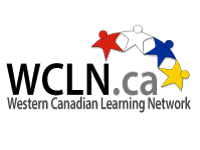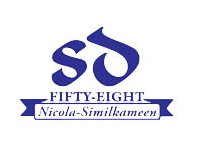Curriculum-Based Funding
(aka Third Party Resources and Services)
The Ministry of Education has set a cap on Third Party Resources and Services allocations (hereafter referred to as TPRS) of up to $600 per full-time student enrolled in Grades K-12. If SCIDES is the official School of Record, we may provide this funding based on the Student Learning Plan, co-created by the parent, teacher and student. The Home Facilitator (such as the parent or guardian) must contact the teacher a minimum of two weeks prior to the commencement of the activity to determine if and how the activity connects to the Student’s Learning Plan and if it qualifies for TPRS.
In Grades K – 7, this funding may be allocated anytime during the school year, but it is tied to progress as outlined in the Student Learning Plan. The TPRS provider must provide progress reports to the SCIDES teacher as evidence of meeting (or not meeting) the learning outcomes.
In Grades 8 and 9, the student must be full-time with SCIDES and active in a minimum of four courses. The TPRS provider must provide progress reports to the SCIDES teacher as evidence of meeting (or not meeting) the learning outcomes.
In Grades 10 – 12, the funding is based on a percentage of the number of courses in which the student is active. For example, students who are active in four courses have access to $300 ($600 x 50%). However, the requested funding must be for an activity that meets the learning outcomes of the currently enrolled courses. The TPRS provider must provide progress reports to the SCIDES teacher as evidence of meeting (or not meeting) the learning outcomes.
We are required to pay a TPRS directly and may not pay parents or students. The TPRS provider must invoice the school for the services provided.
What can be covered?
- TPRS are ideal in helping students meet learning outcomes in non-core areas such as Fine Arts, Physical Education, and Applied Skills.
- SCIDES programs may be supported in very practical and hands-on ways through lessons in areas such as music, dance, horseback riding, judo, skiing, woodworking, welding, piano lessons, and sports. The TPRS allocation is intended for ongoing instructional components that cannot be delivered easily by SCIDES; it is not intended to subsidize equipment such as saddles, weight sets, skis, or hockey equipment.
- SCIDES allows for reimbursement of a portion of internet costs, as a per-family reimbursement, not as a per-student reimbursement. The annual family reimbursement is limited to 10 months of internet provision, to a maximum of $350 per year (only if the learner requires an Internet connection to participate in an educational program delivered in whole or in part through Distributed Learning).
- **The student must be active in their program (as per the student learning plan) and the outcomes or activities need to be apart of the student learning plan)
The $600 funding does not apply to:
- supporting students with special needs in levels 1, 2 and 3, and in categories K,P,Q,R, in achieving the goals in their Individual Education Plans;
- Technical Centre Program Courses;
- post-secondary transition program courses;
- basic consumable school supplies, such as paper, writing tools, student planners, binders, and computer storage media (USB flash drives).
Further, SCIDES is not permitted to:
- contract or employ parents or family members in the capacity of Tutors, Education Assistants, Teacher Assistants, or Special Education Assistants for services to their own children;
- provide payments to parents’ or students’ personal credit card companies. Credit card companies are not considered TPRS



